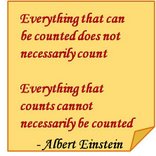Narratives are powerful as a data collection tool in qual research. Story telling is interesting as much as it is intuitive. We all are used to hearing and narrating stories.
Story telling most often happens in retrospect and narration most often involves use of the past tense. But what were to happen if we were to take the less beaten track and start narrating stories in the present tense.
While writing about my experiences some days back I found myself oscillating between tenses. On the one hand – rules of grammar learnt in high school forced me to use the past tense, on the other hand I found writing in the present tense helped an easier recall of the tiny details that served to bring the story to life.
When we narrate in the present we relive the moment while narrating in the past is analogous to recall. When we recall something – we are distant (to a certain extent) from the emotions that are associated with an event – it is like watching a sepia toned image in an old photo album. Reliving is experiencing the event with its emotional paraphernalia.
(Taking a bit of a detour – the present tense is actively used in psychotherapy in dealing with repressed emotions / memories – to aid subconscious feelings and emotions in coming to the fore and to experience the event in full blast as it were – while when the therapist wants his client to disengage emotionally - the client is often asked to metaphorically see the event in a picture album / tv screen)
This does not mean that just encouraging consumers to use the present tense in narrations would do the trick. Since we are used to narrating in the past tense – it may warrant some prodding / setting an example to / the consumer. Encouraging the consumer to use as many of his sense organs (olfactory / visual / auditory / kinesthetic) as possible would definitely aid the process.
It is not without reason that the use of present tense to narrate an incident of the past is called the ‘vivid present’. Writers have experimented with the use of the ‘vivid present / historical present’ in literature. Why not experiment with it in qual research I’d say?
